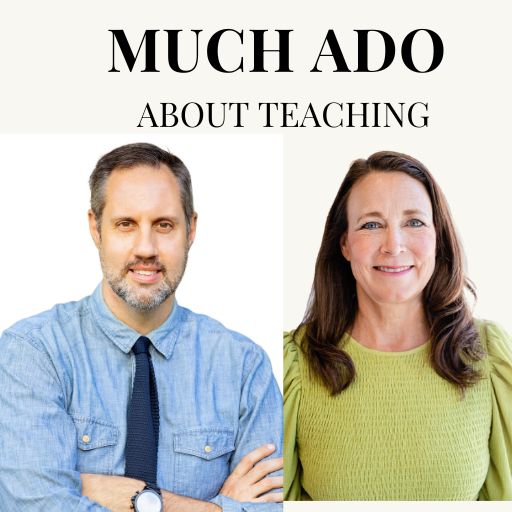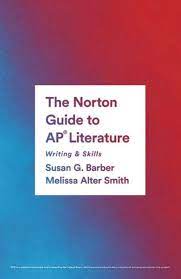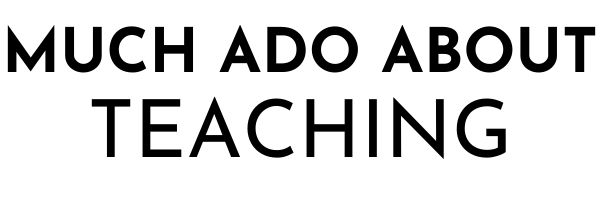Wait a minute… if you hand out a study guide and ask students to find the answers in the textbook, that doesn’t count as close reading?
That is what some of my high school teachers did. They had stacks of ’em. Finish one ditto and they would whip out another. Classwork and homework simply became a scavenger hunt — scan topic sentences, search for dates or figures, guesstimate where an answer would be — and you didn’t have to really read. The work was predictable, routine, and easy.
But did deep understanding occur? Were we learning?
Peter C. Brown, author of Make It Stick: The Science of Successful Learning, would say no. He believes that “mastery requires both the possession of ready knowledge and the conceptual understanding of how to use it.”
A good memory equipped me with ready knowledge, but neither the worksheets nor the fill-in-the-blank quizzes and multiple-choice tests challenged me to conceptualize my understanding. I never achieved mastery because the reading activities never ventured past recall entering the deeper sphere of critical thinking.
Enter the Common Core State Standards
Launched in 2009, the standards were the result of efforts by state leaders, including governors and state commissioners of education from 48 states.
It sought to define what students are expected to know and understand by the time they graduate from high school (college and career readiness) as well as address the expectations for elementary school through high school (learning standards).
Unlike No Child Left Behind, which required benchmark tests in certain grades, the Common Core Standards demanded learning behaviors and outcomes.
“The standards are designed to build upon the most advanced current thinking about preparing all students for success in college, career, and life. This will result in moving even the best state standards to the next level…The Common Core focuses on developing the critical-thinking, problem-solving, and analytical skills students will need to be successful.”
One of its key shifts was to move student reading beyond factual recall. Every teacher, regardless of discipline or grade level, was now a reading teacher.
“The reading standards focus on students’ ability to read carefully and grasp information, arguments, ideas, and details based on evidence in the text. Students should be able to answer a range of text-dependent questions, whose answers require inferences based on careful attention to the text.”
Here is one example of the close reading that is expected from the Common Core:
Students can, without significant scaffolding, comprehend and evaluate complex texts across a range of types and disciplines, and they can construct effective arguments and convey intricate or multifaceted information. Likewise, students are able independently to discern a speaker’s key points, request clarification, and ask relevant questions. They build on others’ ideas, articulate their own ideas, and confirm they have been understood. Without prompting, they demonstrate command of standard English and acquire and use a wide-ranging vocabulary. More broadly, they become self-directed learners, effectively seeking out and using resources to assist them, including teachers, peers, and print and digital reference materials. They build strong content knowledge.
That is way more serious and more strenuous than the work I was doing in high school.
That is the reason the standards were designed. Too many students in too many classrooms were falling behind. It appealed to a simple logic — raise the expectations and you will raise the results.
When the standards first came out, the question that many teachers wanted to know was, what did it look like?
How do you help students become “engaged and open-minded—but discerning—readers and listeners…. and work diligently to understand precisely what an author or speaker is saying, but also question an author’s or speaker’s assumptions and premises and assess the veracity of claims and the soundness of reasoning?”
To develop complexity, the answer lies in simplicity.
Three questions is all you need.
The Secret to Close Reading Success
- What happens?
- How does it happen?
- Why is it important?
Students need order and structure to clarify what they are reading. They need a progression to develop higher-level thinking. The three questions achieve that.
They are open-ended to allow for flexible thinking and creativity yet focused and directive to steer them down a logical path.
These are the three questions I have repeated over and over regardless of the course or student ability. It has worked time and time again in my AP Literature and Composition class as well as in my remedial studies program.
Here’s an in-depth explanation of the purpose of each question:
- What happens?
This is the literal foundation. It is not interpretative. It is what the text says explicitly.
If you use Bloom’s taxonomy, it is knowing what is presented overtly. In literature, it is identifying things such as who the characters are, what the setting is, what conflict exists, and what transpires in the plot. When applied to non fiction, it is recognizing and selecting the important events, ideas, and information in a text.
- How does it happen?
Now it is time to move past the explicit and dive into the inferential. How does it happen is a question of technique or design.
When students closely read fiction and poetry, they are questioning the impact of literary elements. When they examine nonfiction, they are examining cause and effect, comparison and contrast, the development of ideas from the general to specific or how information is arranged from least to most important or vice versa.
- Why is it important?
Finally, it is time to ascend and take students thinking to a high level. This question encourages students to evaluate an author’s intention and effect.
“Why is it important?” is a way for students to assess the bigger picture. After recognizing “what” happened and inferring “how” it happened, it is time for students to analyze “why” it matters.
It might contribute to the development of a theme. It might overturn a false assumption. It might be an argument.
Proof
The best way to convey how important these three questions are to the development of close reading skills is to put them into play.
I have applied the three questions to two poems. One is an Emily Dickinson poem, Success is Counted Sweetest, and model how a high school student might use the three questions to achieve a close read of the text. Then I apply the three questions to Carl Sandburg’s Chicago, and do a close read, modeling how middle school students can sharpen their analytical skills. .
SUCCESS IS COUNTED SWEETEST
Success is counted sweetest
By those who ne’er succeed.
To comprehend a nectar
Requires sorest need.
Not one of all the purple Host
Who took the Flag today
Can tell the definition
So clear of victory
As he defeated – dying –
On whose forbidden ear
The distant strains of triumph
Burst agonized and clear!
— Emily Dickinson
High-School Level Interpretation
- What happens?
In this poem the speaker is reflecting on success, and to do that, focuses on those who never succeed. In stanza 1 it mentions that to comprehend it, you need to feel it’s absence.Stanza 2 states that not of of the victors can tell the definition of success. Finally, stanza 3 continues the idea of stanza 2, saying that the one who lost — the defeated — knows it better than the victor.
- How does it happen?
The important devices the poet uses are symbols, diction, and paradox. the idea that seems self contradicting but contains a possible truth is that success is best understood by those that never succeed. This is reinforced through diction and symbolism. “Purple” connotes royalty; the robes of kings and emperors were dyed purple. It is not the winners on the battlefield that know victory, it is more the loser. Diction is crucial in the last stanza. The loser feels agony because it is “clear” that he is “distant” from the sounds of triumph. This use of the word “distant” is literal and metaphorical because not only is he geographically removed from it, it is distant from his knowledge.
- Why is it important?
The sweetness of success is best understood by those who have felt its absence the most. Implicitly, it argues that victors do not have as deep an understanding as those that fail or are denied access to success. This is best exemplified by the dying soldier that has “won” this knowledge through the painful experience of defeat and with his death.
Here is another look at how the three questions can unlock meaning in poems for middle schoolers.
CHICAGO
Hog Butcher for the World,
Tool Maker, Stacker of Wheat,
Player with Railroads and the Nation’s Freight Handler;
Stormy, husky, brawling,
City of the Big Shoulders:
They tell me you are wicked and I believe them, for I have seen your painted women under the gas lamps luring the farm boys.
And they tell me you are crooked and I answer: Yes, it is true I have seen the gunman kill and go free to kill again.
And they tell me you are brutal and my reply is: On the faces of women and children I have seen the marks of wanton hunger.
And having answered so I turn once more to those who sneer at this my city, and I give them back the sneer and say to them:
Come and show me another city with lifted head singing so proud to be alive and coarse and strong and cunning.
Flinging magnetic curses amid the toil of piling job on job, here is a tall bold slugger set vivid against the little soft cities;
Fierce as a dog with tongue lapping for action, cunning as a savage pitted against the wilderness,
Bareheaded,
Shoveling,
Wrecking,
Planning,
Building, breaking, rebuilding,
Under the smoke, dust all over his mouth, laughing with white teeth,
Under the terrible burden of destiny laughing as a young man laughs,
Laughing even as an ignorant fighter laughs who has never lost a battle,
Bragging and laughing that under his wrist is the pulse, and under his ribs the heart of the people,
Laughing!
Laughing the stormy, husky, brawling laughter of Youth, half-naked, sweating, proud to be Hog Butcher, Tool Maker, Stacker of Wheat, Player with Railroads and Freight Handler to the Nation.
— Carl Sandburg
Middle school level interpretation
- What happens?
A person talks about the industrial aspects of Chicago such as its manufacturing, agricultural and transportational importance. The speaker then discusses some of the darker aspects of the city such as its corruption, crime, and poverty. Finally the poem ends with a list of all the qualities and things that the city should be proud of.
- How does it happen?
The poet uses a lot of personification. Stanza 2 shows many of the human qualities that the city possesses. It is “wicked,” “crooked,” and “brutal.” It is also, “Flinging magnetic curses amid the toil.” The poet also uses some metaphors, like when he says that the city “is a tall bold slugger set vivid against the little soft cities.”
- Why is it important?
The use of personification is important because it creates an emotional relationship for the reader with the city. We see it as a living, breathing thing, capable of hurt, pride, growth, and loss.
CONCLUSION
While some may say that the three questions are too simplistic, I know from experience that the last thing students need is a 10-15 point checklist of things to do while they are reading. It disrupts the reading process, and instead of stimulating independent thinking it stifles it. That is because it narrows a student’s analysis to a predetermined path. The three questions are broad enough to allow for differences of thought while being constructive enough to generate deep thinking.
[mc4wp_form id=378]













3 comments
Mary Lou Baker
This is great! I love your practical examples!
Denise Trach
I love the thorough explanation of the why behind the need for close reading. This post also made say, “Phew,” because this is how I’ve always taught close reading, so I feel reaffirmed. Thank you for writing about this!
Daniel Dorogusker
You say the Common Core “sought to define what students are expected to know and understand by the time they graduate from high school (college and career readiness) as well as address the expectations for elementary school through high school (learning standards).” And you note, “one of [the Common Core’s] key shifts was to move student reading beyond factual recall. Every teacher, regardless of discipline or grade level, was now a reading teacher.” What you don’t say is that the Common Core and the Next Generation Learning Standards are entirely skill based. These national frameworks for what students should know and be able to do after 13 years of ELA education are mute on the topic of texts. In the “Craft and Structure” standard (CCSS. ELA-Literacy.RL.11-12.4) there is a parenthetical reference to an author, “(Include Shakespeare as well as other authors.),” but that is it. The updated Next Generation Learning Standards is scrubbed of even this modest mention. This is the blessing and bane of these standards which take an agnostic position on which texts students will read. David Coleman, a prime mover of the CC and the CEO of College Board, cut his intellectual teeth in the era of the cultural wars. Coleman’s solution was to sidestep the controversy over texts and focus exclusively on skills. The genius of the CC is its silence on the topic of what to read. What has been the consequence of vacating all textual specificity from state and national ELA standards? The AP English Literature and Composition exam is a good barometer of what kind of reading is required of students. The poetry and prose passages for the first two essays are now drawn almost exclusively from 20th-century texts. The third FRQ, which used to center on a work of substantial literary merit, is now open to any and every “text.” Students can write about plays, movies, comic books, TV shows, etc. Surely the title of this class is a misnomer. The authors of this newsletter consistently bring their thoughts to bear on substantial works of literature, but the pressures to abandon traditional texts in favor of contemporary media is enormous. The situation I describe is the harvest of the Common Core, to which I say with Hamlet, “Ay, madam, it is common.”